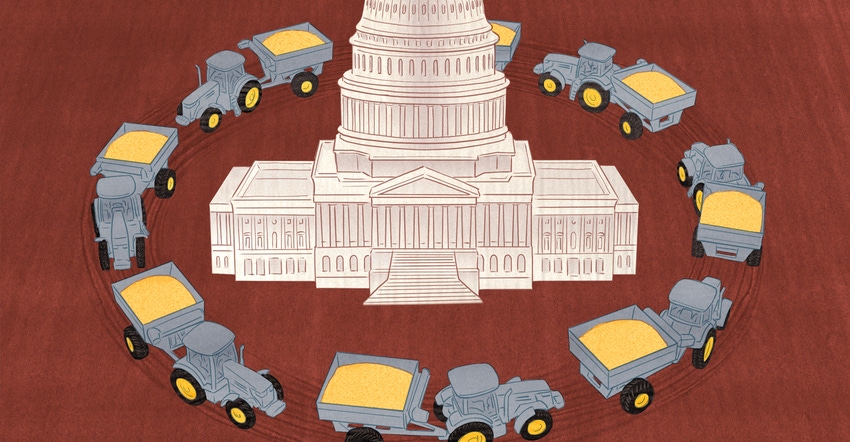
“Don’t mess with crop insurance.”
The phrase has become a battle cry among farmers in the Midwest, especially as legislators headed out for listening sessions and town halls ahead of the next farm bill.
And so far, legislators are hearing the message.
But as crop insurance takes on a larger risk management role, it might be time to re-evaluate how the program is designed and what’s needed to defend it going forward.
Crop insurance has become the new favored safety net for farmers, most notably preventing calls for ad hoc disasters after the 2012 drought. Our latest farmer survey found that 83% of respondents agreed that crop insurance is a very important part of one’s risk management plan. In addition, 75% of farmers said they’re worried the next farm bill will not provide an adequate safety net for their farm.
So if the farm bill’s Title 11 crop insurance program is so crucial, is it time to take a deeper look at the traditional Title 1 commodity programs? In the current tight budget scenario, legislators will no doubt take a closer look at how to spend taxpayers’ money.
Enhanced coverage
During the 2014 debate, Congress eliminated direct payments, which fell under Title 1 within the farm bill. As a replacement, they offered Agriculture Risk Coverage (ARC) and Price Loss Coverage (PLC) to provide income support to farmers under adverse price or yield conditions at levels above their regular crop insurance coverage.
“The way we’ve approached the federal farm safety net is we’ve always had crop insurance being one arm and the commodity title being another arm. But we never really sat down and had a comprehensive talk to merge the two together,” says Chad Hart, crop specialist and economist at Iowa State University.
The commodity title was always about protecting against low prices, including deficiency payments of countercyclical payments and PLC with a focus on price-driven policy. Whereas crop insurance has offered a safety net against low yields, but recently it has also offered a way to protect against revenue losses.
“We have these two things doing similar things. Do we need two of them, or should we make one really good one?” Hart asks.
So far this Congress has been unwilling to take that on and harmonize two expenditures of farm programs that seem to be running on parallel tracks.
“Congress doesn’t like the idea,” Hart says, as it gives away legislators’ ability to create programs.
“I don’t think Congress will close down FSA,” adds Art Barnaby, agricultural economist and crop insurance specialist at Kansas State University, recalling what the 1996 Freedom to Farm Bill did by establishing direct payments and significantly decreasing the workload for local Farm Service Agency offices. In his state of Kansas, six county offices closed.
“Once in a while we talk about moving towards a free market, but if so, all of the USDA agencies wouldn’t be there,” Barnaby adds.
If the farm bill tries to get passed quickly before the 2018 expiration, Hart doesn’t anticipate sweeping changes and policy will likely stay close to the status quo.
Brandon Willis, former administrator of USDA’s Risk Management Agency and now assistant professor at Utah State University, says crop insurance doesn’t address the long-term systemic price risk in agriculture. PLC and ARC puts the floor on the bottom for when market prices go down, Willis says. “There’s still value in Title 1.”
In 2014-16 crop years, corn per acre received about $10.55 for ARC, 25 cents for PLC and $2.23 for net farm insurance indemnities, totaling $13.03 for safety net payments. Soybeans per acre saw payments of $1.63 for ARC, no payments for PLC and −$1.37 for net insurance indemnities, for a net of 24 cents.
Next: A closer look at the proposed cuts to this popular risk management program
About the Author(s)
You May Also Like






